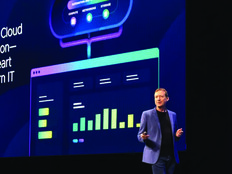Data Is the First Hurdle to Implementing AI
Many agencies interested in implementing AI lack the data governance, lineage and master data management necessary to address duplication and build business units’ trust in the data. AI models are useless without quality data to train them.
The reality is that many agencies have important data mixed with unimportant data in silos all over the place and will for some time. One solution is to put the data all in one place in the cloud; another is to abstract these data swamps onto an orchestration plane for data scientists to play with.
Agencies also must ensure their data isn’t biased in a way that could lead AI models to make flawed predictions and should consider anonymizing certain data used to train them.
DIVE DEEPER: How AI and IoT can help increase efficiency while reducing costs.
AI Requires a Culture Shift and Serious Investment from Agencies
Those agencies that want AI must be prepared to invest in research and development as well as in the talent needed to operate and maintain the technology.
Agencies must make an honest assessment of the skills essential to implementing AI that they possess and lack. Computing and data storage devices connect differently in an AI environment, and programmers and data scientists need specialized skills.
Training employees in AI in-house comes with its own challenge: That talent will likely be poached by industry, which can offer much larger salaries. Given that agencies are a decade away from being able to supplement that lost workforce with AI, they must start paying AI talent differently today if they’re serious about the technology. While it bucks the General Schedule pay scale, expect AI personnel to make more money than management.
Investments also must be made in back-end infrastructure capable of parsing through petabytes of data, and a budget of $25 million a year won’t cut it. ChatGPT costs tens of millions of dollars annually to keep running, and agencies should prepare to spend a billion dollars on one project rather than spreading millions around to different pilots that will never be viable at that funding level.
READ MORE: Check out the federal government’s 'blueprint’ for an AI bill of rights.
Machine Learning Is an On-Ramp to AI
Some of the best early AI use cases are mundane tasks that the government catches flak for being slow to address, such as paperwork backlogs that large language models can help reduce. A simple self-service capability like an FAQ chatbot could significantly lighten the workload of agency staff responsible for interacting with citizens. In the longer term, AI could be used by the government to evaluate vendor performance on contracts.
There’s a federal education curve in understanding the options that industry can help address. CDW·G holds onsite workshops with agencies to identify such use cases and the data, hardware and computing resources that should be part of their AI roadmap.
In some cases, ML is easier to implement and can solve agencies’ immediate problems while serving as an on-ramp to AI. Microsoft Azure offers several automated ML solutions for simple classification in the short term.
ChatGPT has agencies looking for an AI grand slam, when really they just need a base hit to launch their programs.
This article is part of FedTech’s CapITal blog series.
















